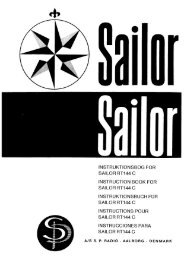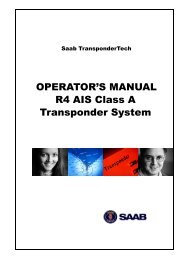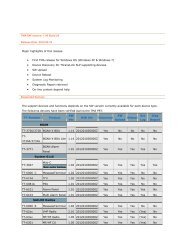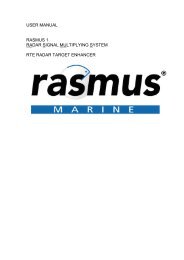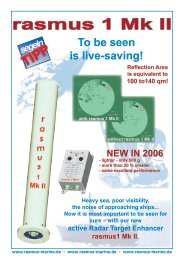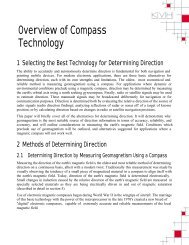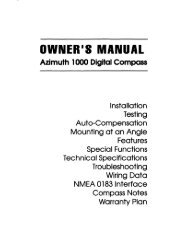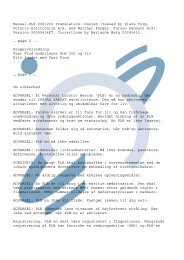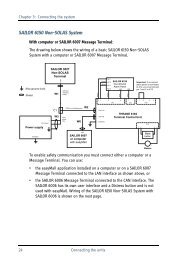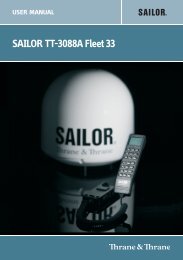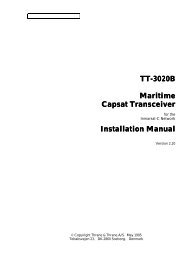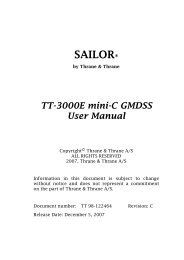Thrane & Thrane A/S TT-3026L/M/S easyTrack ... - Polaris-as.dk
Thrane & Thrane A/S TT-3026L/M/S easyTrack ... - Polaris-as.dk
Thrane & Thrane A/S TT-3026L/M/S easyTrack ... - Polaris-as.dk
Create successful ePaper yourself
Turn your PDF publications into a flip-book with our unique Google optimized e-Paper software.
<strong>TT</strong>-<strong>3026L</strong>/M/S <strong>e<strong>as</strong>yTrack</strong> Transceiver User Manual<br />
2 INTRODUCTION TO INMARSAT-C<br />
The Inmarsat-C is a store and forward mailing system, which enables the user to send and receive data to and from<br />
mobile terminals in the Inmarsat-C system. The Inmarsat-C system provides the possibility of reaching remote<br />
are<strong>as</strong> where other methods of communication are impossible.<br />
The Inmarsat-C system offers:<br />
• Data transmission to and from a mobile unit.<br />
• Broadc<strong>as</strong>t data to groups of mobile terminals.<br />
• Manage position reporting from fleets of mobile units.<br />
• Unique polling system, that enables the operator to request various data from the mobile units.<br />
The Inmarsat satellite network provides the communication link between the mobile and the destination office.<br />
Inmarsat is a world-wide satellite network. 4 geostationary satellites are used to cover the world. Satellite data link<br />
coverage is excellent between 70º North and 70º South. Because the polar regions cannot be seen from<br />
geostationary satellites these regions are not covered.<br />
The Inmarsat-C system contains 2 satellite stations types that are of interest for the operator of the <strong>e<strong>as</strong>yTrack</strong> MES.<br />
One type is the NCS stations and the other is the LES stations.<br />
The NCS handles the registration of the MES in the Inmarsat-C system. The Inmarsat-C system h<strong>as</strong> one NCS for<br />
every geostationary satellite i.e. the world contains four NCSs. Each NCS controls what is called an ocean region.<br />
This naming comes from the fact that the four geostationary satellites covers the Atlantic Ocean Region E<strong>as</strong>t,<br />
Atlantic Ocean Region West, Indian Ocean Region and the Pacific Ocean Region. Before using the Inmarsat-C<br />
system the <strong>e<strong>as</strong>yTrack</strong> MES must be registered in one of the four ocean regions. This is done by instructing the<br />
<strong>e<strong>as</strong>yTrack</strong> MES to perform a Login to one of the four NCSs.<br />
Inmarsat Satellite<br />
Inmarsat Satellite<br />
Inmarsat Satellite<br />
Inmarsat Satellite<br />
Network<br />
Coordination Station<br />
Network (AORE NCS)<br />
Coordination Station<br />
Network (AORW NCS)<br />
Coordination Station<br />
Network (POR NCS)<br />
Coordination Station<br />
(IOR NCS)<br />
Figure 1 Registration at NCS<br />
5<br />
eCTrack<br />
Inmarsat-C<br />
MES



